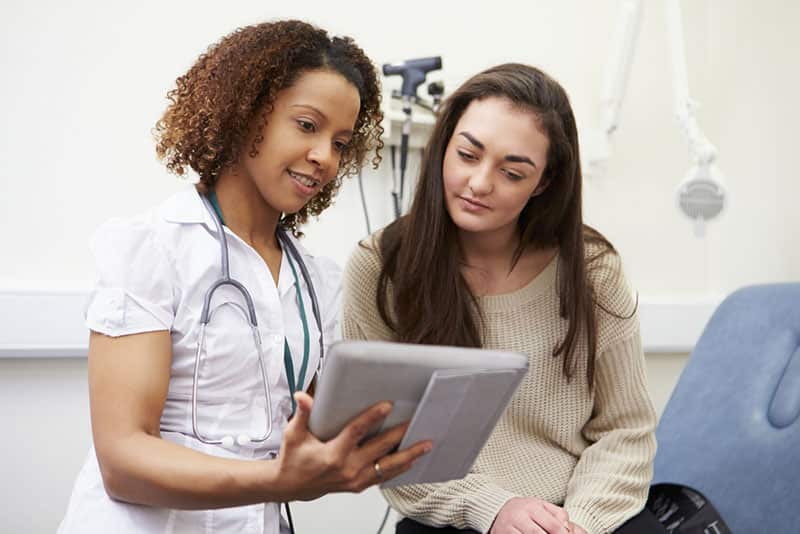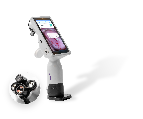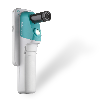Well-woman exams help to save lives. The annual screening sessions have become a regular part of many women’s health routines. Still, many women do not take advantage of this service. Patient engagement fears about cost, and simple scheduling issues all affect patient uptake. The increasing array of digital health solutions at physicians’ disposal may soon overcome these barriers.

The importance of well-woman exams
There are few things more critical for ensuring a woman’s health than an age-appropriate well-woman examination. Well-woman examinations give patients a valuable opportunity to form warm, long-term relationships with healthcare providers who can identify many health issues early enough to address while risk is still low. “The well-woman exam is an important part of a preventative medicine strategy that is also cheaper than therapeutic medicine in the long-term,” says Jose Carugno, M.D. and Director of the Minimally Invasive Gynecology Surgery and Robotic Unit at the University of Miami’s Obstetrics and Gynecology department.
Well-woman exams are especially important for the early detection of cervical cancer, an easily treatable disease if caught in its initial stages. According to the National Institute of Health’s Progress Report, the latest statistics from the National Cancer Institute (NCI) show that women with cervical cancer receive a diagnosis at a later stage than in previous decades, when cancer progresses to a more dangerous phase. Because of later diagnosis, mortality and morbidity from cervical cancer have not gone down – despite reduced incidence driven by the HPV vaccine. Why doesn’t a vaccinated generation see increased rates of early detection? These statistics underscore the importance of the well-woman examination and the duty primary care providers have to use all methods at their disposal to screen women at regular intervals.
In the past, the cost of screening has prevented women from attending annual visits. Now, The Affordable Care Act covers annual well-woman exams, and patients can receive screenings with no out of pocket costs. In cases in which patients lack access to insurance, organizations such as Planned Parenthood can assist with payment options, and many underserved women may qualify for free care.
Learn more about the health challenges facing women in underserved groups>>
Digital health solutions for engaging women
Engaging women once they attend their first well-woman exam also provides a critical tool for patient education and empowerment. Patients who feel engaged have a higher chance of returning to another exam. Studies have shown that patient participation in their own healthcare, with an equalized dynamic between the patient and clinician, leads to better patient satisfaction, improved quality of life, lowered anxiety about their health status, among other benefits. The use of digital health solutions within the well-woman exam itself offers physicians new dimensions of patient engagement.
The telehealth-enabled EVA System mobile colposcope demonstrates how digital health tools aid patient education. The EVA System allows providers to show women images of their own cervix immediately, including any abnormalities and possible areas for biopsy, (which has become known as a ‘cervical selfie.’) In addition to taking digital images of the cervix with up to 16x magnification, EVA also allows annotating of those images. Physicians can also securely share patient cases with peers to gain a second opinion whilst the patient remains in the room. Popular among patients, these instant cervical images have received the nicknamed “Cervical Selfies” and have improved loss-to-follow-up ratios. The EVA system proves one way in which digital healthcare helps to increase engagement and encourage ongoing well-woman exams.
SMS and other digital reminders
Many women fail to attend their well-woman exam because they simply forget to schedule an appointment, or worse, do not return for follow up treatment if they receive a positive Pap test. Many healthcare systems have turned to digital means to overcome the problem of loss-to-follow-up. The American College of Obstetricians and Gynecologists (ACOG) urges its members to “establish a simple, reliable tracking and reminder system.”
Email reminders can play an important role in ensuring that women receive their well-woman exams at the correct intervals. A number of commercial services will contact patients directly primarily by telephone to remind them about screenings and follow up appointments. The ACOG makes it clear to take caution when contacting patients by telephone. “Care also must be taken to limit the amount of information disclosed by way of voice mail or to other individuals who may answer the call without prior consent. Instead, it may be preferable to leave a name and telephone number, asking the patient to call the office.”
Some healthcare systems avoid the issue of potentially reaching someone other than the patient. The Australian Cancer Foundation offers an SMS service which sends automatic reminders to patients when the time comes for their next screening. The United States has similar programs found in individual healthcare systems.
Learn more about the challenges of cervical cancer screening in Australia >>
Making use of technological tools can go part of the way towards encouraging women to attend their well-women exams. However, equally significant are ‘traditional’ physician-patient interactions. Women need ongoing information about how attending their annual well-woman exams ensures their long-term health prospects and gives them the quality of life afforded to the healthy well women.
Want to see the difference the EVA System will make to your well-woman practice? Book a live demo today and see how it works for yourself








